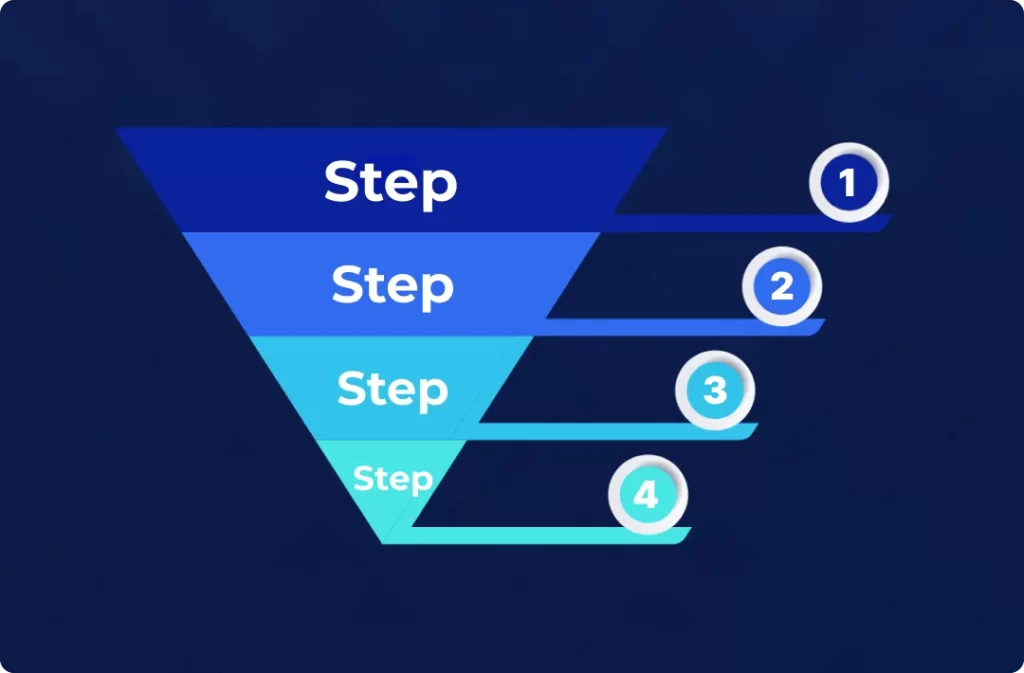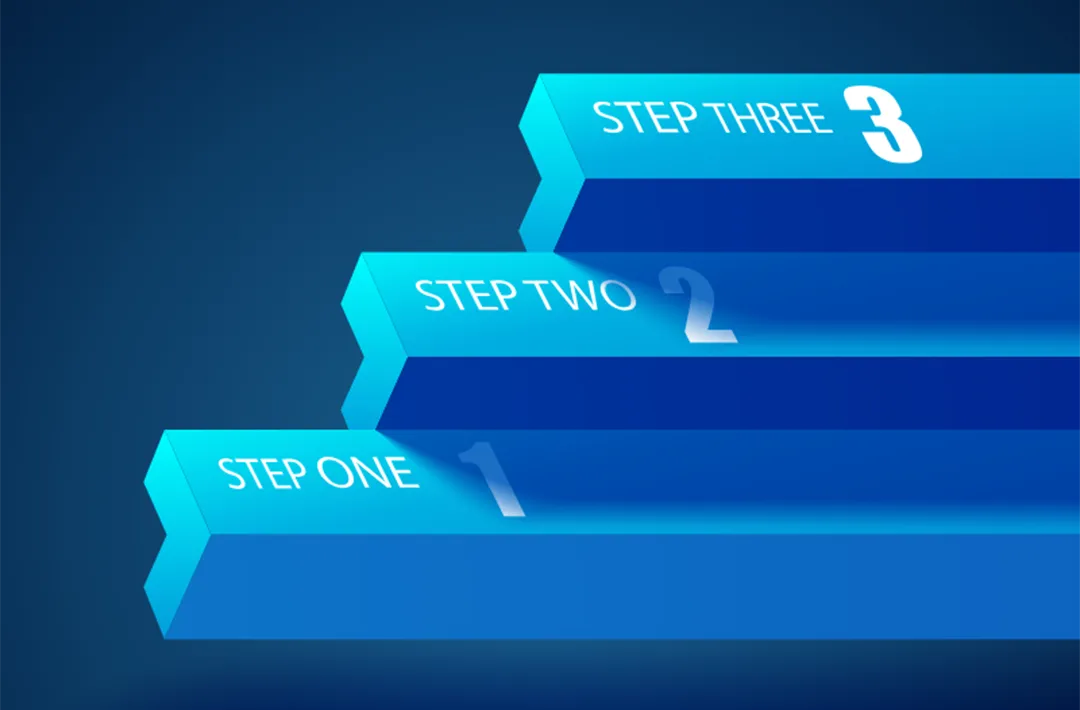In today’s competitive digital marketplace, closing sales has become increasingly challenging. The landscape is evolving rapidly, with even the most established players in the market recognizing the need to adapt.
More and more, businesses are turning to commercial teams to sell not just high-ticket items but also lower-priced offerings through personalized phone calls. This shift signifies a crucial change in sales strategies, emphasizing the importance of direct, human-to-human interactions in closing deals.
However, the effectiveness of sales calls isn’t just reserved for the market giants. Now, with the right strategy, businesses of all sizes can harness the power of sales calls to significantly boost their conversion rates.
This is where the Sales Call Funnel comes into play – a simple yet profoundly effective approach that is leveling the playing field in the digital sales arena.
At Hat Funnels, we’ve seen firsthand the transformative impact of a well-structured Sales Call Funnel. It’s a strategy that transcends industry boundaries, offering a universal solution to the common challenge of converting leads into customers.
In this guide, we’re going to unveil the secrets behind this powerful funnel. From initial contact to the final sales call, we’ll provide you with a step-by-step breakdown of how to implement this funnel in your own business.
Whether you’re a small startup or a growing enterprise, the Sales Call Funnel is your key to unlocking new sales opportunities and achieving sustainable growth.
So, let’s fire things off and discover how you can leverage this funnel to close sales over the phone, just like the big players in the market.
Understanding the Sales Call Funnel
In an era where digital noise is louder than ever, and consumer attention spans are shrinking, the Sales Call Funnel emerges as a lighthouse of personalized marketing.
But what exactly is a Sales Call Funnel, and why is it becoming a critical tool for businesses across various industries?
The Essence of the Sales Call Funnel:
A Sales Call Funnel is a strategic framework designed to guide potential customers from the first point of online contact to a personalized phone conversation.
Unlike traditional digital marketing funnels that often end with an online transaction, this funnel extends the journey to include a direct, one-on-one interaction.
This approach is particularly effective for selling products or services that require a deeper level of customer understanding and trust, such as high-ticket items or complex solutions.
Why Sales Calls?
In a digital age, the human element of business can sometimes be lost. Sales calls bring this element back, allowing for real-time, personalized communication. This human connection fosters trust and credibility, elements that are crucial in converting a lead into a customer, especially when dealing with more significant investments.
The Objective
The primary goal of the Sales Call Funnel is to secure a commitment from potential customers to engage in a phone call. This call is not just about closing a sale; it’s an opportunity to understand the customer’s needs, address their concerns, and present your product or service as the solution to their specific challenges. It’s about creating a conversation that leads to conversion.
One of the most significant advantages of the Sales Call Funnel is its adaptability. Whether you’re a small business owner or part of a larger enterprise, this funnel can be tailored to fit your specific needs and resources.
It’s not exclusive to big players with extensive commercial teams; even solo entrepreneurs can implement this strategy effectively to enhance their sales process.
In the next sections, we’ll dive into the specifics of each step in the Sales Call Funnel, providing you with actionable insights and tips to implement this strategy in your business. From crafting an engaging opt-in page to mastering the art of the sales call, we’ll guide you through the process of transforming your digital leads into successful phone sales.

The 4-Step Funnel Breakdown
The Optin Page
The opt-in page is the first and one of the most crucial steps in our client’s sales funnel. It serves as the entry point, capturing the attention of potential leads and setting the tone for the journey ahead.
The design of this page is intentionally straightforward yet powerful, following a proven structure to maximize engagement and conversion.
The page is a single-fold layout, ensuring all crucial information is immediately visible without scrolling. It has a compelling headline, a persuasive sub-headline, and a series of bullet points, accompanied by an engaging image.
The headline’s purpose is to make a bold promise that resonates with the audience’s desires.
A great rule of thumb is to always use the framework “Method-Result-Timeframe“
Example: “How I used a simple 15-minute webinar script to generate 6 figures in sales in 1 year” or “How I Turned a Simple Email Strategy into $100K Revenue in Just 6 Months“
Following the headline, there is the subheadline.
The sub-headline serves three key purposes:
- Objection Handling: It addresses and neutralizes potential objections. Example: “Even if you’re new to the market”
- Demonstrating Potential: It highlights the effectiveness and potential of the offered solution. Example: “Discover a method so effective, that over 10,000 users have doubled their income.”
- Establishing Credibility: It adds credibility to the claim. Example: “The same strategy the biggest players in the market are using and don’t want you to know.”
With a strong headline and subheadline, you should already do the work, then you just add the bullet points to build anticipation and outline what the audience will learn from the video.
They are strategically written to tease the content without giving everything away, encouraging the viewer to watch the video for the full insights.
This opt-in page is meticulously designed to not only capture leads but also to prime them for the next steps in the funnel.
It’s a blend of promise, proof, and expectation setting, ensuring that the audience is intrigued and motivated to proceed further.
Pro Tip: Always try to create straightforward pages with light colors because it increases page speed!
The Video Page
The sales video page is a pivotal component of the funnel, designed not to directly sell, but to guide the viewer towards realizing the need for a strategy session.
This approach is about identifying and addressing a problem or untapped potential that the viewer may not have fully recognized.
Video Structure:
Part 1 – Introduction:
- Showcasing Results: The video starts by highlighting a significant achievement or result that captures attention.
- Brevity and Engagement: It mentions the short duration (10-15 minutes) to encourage viewers to watch the entire video.
- Promise of Results: The video promises viewers they can achieve similar outcomes.
- Social Proof: It includes testimonials or examples of others who have achieved results, adding credibility.
- Incentive to Stay: A mention of a gift for viewers who watch until the end is included to maintain engagement.
Part 2 – Showcasing the Potential of the Solution:
- Three Key Elements: The video introduces three key aspects of the solution, each backed by proof and highlighting the pain of not having it.
- Teaser Approach: The keys are presented in a way that intrigues the viewer without giving away the complete solution.
- Benefits Highlight: It wraps up with the potential benefits of applying these keys.
- Need for a Tailored Approach: The video emphasizes the need for a personalized blueprint, method, or guide.
- Call to Action: It concludes with a pitch to book a strategy session, stating the video is a recording and may not cover all cases, but personalized sessions are available.
The Scheduling Page
After captivating your audience with an engaging opt-in page and structured sales video, the next step in the Sales Call Funnel is the scheduling page. This page plays a pivotal role in converting a lead’s interest into a concrete action – booking a strategy session or sales call.
The design and content of the scheduling page are crucial, as they need to facilitate a smooth transition into this commitment.
Simplicity and Clarity:
- The scheduling page should be straightforward and user-friendly. Avoid clutter and focus on a clean design that makes the booking process as simple as possible.
- Clearly display available times and dates, allowing leads to easily select a slot that works for them.
Pre-Qualification Questions:
- Incorporate a set of pre-qualifying questions on the scheduling page. These questions serve multiple purposes:
- They help in gathering essential information about the lead, which can be used to tailor the sales call to their specific needs and interests.
- They act as a filtering mechanism, ensuring that the leads booking the calls are genuinely interested and are a good fit for what you’re offering.
Setting Expectations:
- It’s important to set the right expectations for the call on the scheduling page. This includes:
- Informing the lead whether they will be speaking with you directly or with a team member.
- Giving a brief overview of what the call will entail, such as the topics to be discussed or the duration of the call.
- If applicable, mentioning any preparation that the lead should do before the call (e.g., thinking about specific challenges they face, or questions they might have).
Reinforcing Value:
- Use this opportunity to reinforce the value that the lead will get from the call. This could be a short statement or bullet points highlighting the benefits of the strategy session, such as personalized advice, solutions to specific problems, or insights into improving their financial situation.
Confirmation and Follow-Up:
- Once a lead schedules a call, immediately send a confirmation email. This email should reiterate the date and time of the call, what they can expect, and how they can prepare.
- Consider setting up automated reminders as the call date approaches to ensure they remember and are ready for the session.
The scheduling page is more than just a logistical step; it’s an integral part of the customer journey that bridges the gap between interest and action.
By making this process seamless and informative, you increase the show-up rate for your calls.
The Free Course
The final step in the Sales Call Funnel is an innovative addition that not only adds value for the potential customer but also serves as an effective tool for nurturing leads: the Free Course.
This step is introduced after the lead has engaged with the sales video, and it plays a crucial role in maintaining their interest and building further trust.
Purpose and Value of the Masterclass:
- The Free Course is offered to leads who have watched the sales video until the end. This serves as both a reward for their engagement and an opportunity to deepen their understanding of the subject matter.
- The course should be directly related to the content of the sales video and the overall product or service being offered. It’s designed to provide valuable insights and actionable knowledge, further establishing your authority and expertise in the field.
Content and Structure:
- The content of the course should be informative, relevant, and engaging. It should expand on the topics covered in the sales video, offering deeper insights and practical advice.
- Consider structuring the course into digestible modules or sections, making it easy for participants to follow and absorb the information.
Delivery and Accessibility:
- Ensure that the course is easily accessible. This could be through a dedicated landing page, an email course, or a series of video lessons.
- The delivery method should be convenient for the target audience, allowing them to consume the content at their own pace.
Building a Connection:
- Use the course as an opportunity to build a stronger connection with the audience. Encourage interaction, such as Q&A sessions, feedback forms, or community discussions.
- This interaction not only enhances the learning experience but also provides valuable insights into the audience’s needs and preferences.
Encouraging Further Action:
- At the end of the masterclass, include a call to action encouraging participants to book a strategy session or sales call if they haven’t already. Highlight how this call can provide personalized solutions and direct assistance beyond what the course offers.
- For those who have already booked a call, use the course to reinforce their decision and keep them engaged until the call takes place.
The Free Course is a strategic addition to the Sales Call Funnel that enhances the overall experience for potential customers.
By providing valuable content and fostering engagement, this step effectively supports the journey from lead to customer, making the transition to the sales call more natural and appealing.

The Script of the Sales Call
After guiding potential customers through the initial stages of the Sales Call Funnel, the actual sales call becomes the critical moment where leads are converted into clients.
To maximize the effectiveness of these calls, our funnel incorporates the SPIN selling method. This renowned technique, developed by Neil Rackham, is particularly effective for complex, high-value sales like those our funnel targets.
Understanding SPIN Selling
SPIN Selling revolves around four types of questions – Situation, Problem, Implication, and Need-payoff. These questions are designed to lead the conversation in a way that uncovers the lead’s needs and positions your product or service as the solution.
Situation Questions:
- These questions help you understand the lead’s current situation. In our context, this could involve asking about their current financial strategies, tools they use, or challenges they face in managing finances.
- Example: “Can you tell me about your current investment strategy?”
Problem Questions:
- Here, you delve deeper to identify specific problems or dissatisfactions the lead might be experiencing. These questions get the lead to think about the issues they are facing.
- Example: “What challenges are you encountering with your current investment approach?”
Implication Questions:
- These questions make the lead consider the consequences or implications of their problem. They help to amplify the problem’s significance, creating a sense of urgency.
- Example: “How do these challenges affect your long-term financial goals?”
Need-Payoff Questions:
- Finally, these questions get the lead to think about the value or usefulness of solving their problem. They shift the focus to the solutions and benefits.
- Example: “How would having a more effective investment strategy impact your financial security?”
Implementing SPIN in Your Sales Calls
- Training your sales team to use SPIN questions effectively is crucial. It’s not just about asking questions; it’s about listening to the answers and using them to guide the lead towards realizing the need for your product or service.
- The goal is to lead the conversation in a way that the lead themselves articulates the need for what you’re offering, making the sale a natural next step.
Tailoring SPIN to Your Audience
- While the SPIN framework is consistent, the specific questions should be tailored to your audience and your product or service.
- Understanding your audience’s typical situations, problems, and aspirations will allow you to craft questions that resonate and are effective.
The SPIN method is a powerful tool in the sales process, particularly when dealing with sophisticated products or services.
By integrating SPIN into your sales calls, you can create conversations that not only uncover the lead’s needs but also position your offering as the ideal solution, thereby increasing the likelihood of conversion.
To maximize the efficiency and effectiveness of the Sales Call Funnel, incorporating automation is key. Automation not only streamlines the process but also ensures consistent follow-up, which is crucial for maintaining engagement and moving leads through the funnel.
Here, we’ll explore the essential automated sequences that play a vital role in the success of the Sales Call Funnel.
- Automation for Non-Bookers:
- Purpose: To re-engage leads who opted in but did not book a call.
- Strategy: Implement a series of friendly, persuasive emails that remind them of the value and potential benefits of booking a call. These emails should be spaced out to maintain contact without overwhelming the lead.
- Content Tips: Include testimonials, success stories, or additional insights related to your service or product to reinforce the message.
- Call Booking Reminder Sequence:
- Purpose: To ensure that leads who have booked a call remember and are prepared for it.
- Strategy: Set up automated reminders leading up to the call. These can be a mix of email and SMS messages.
- Content Tips: Each reminder should build excitement about the call and include practical details like the date, time, and how to join the call.
- Missed Appointment Sequence:
- Purpose: To re-engage leads who missed their scheduled call.
- Strategy: An automated email sequence that reaches out to these leads, offering them an easy way to reschedule. The tone should be understanding and accommodating.
- Content Tips: Emphasize that their opportunity is still available and make the process of rescheduling as simple as possible.
- Delivery of the Free Masterclass Course:
- Purpose: To provide additional value and keep leads engaged.
- Strategy: An automated sequence that delivers the free masterclass to leads who watched the sales video until the end.
- Content Tips: Break down the course content into manageable parts, delivered over a series of emails. Include clear calls to action in each email, encouraging leads to book a call if they haven’t already.
Integrating Automation with Personalization
While automation is essential for efficiency, personalization should not be overlooked. Tailoring messages to the lead’s specific interactions with your funnel can significantly increase the effectiveness of your communications. Use the data you’ve gathered through the funnel stages to customize your messages, making each lead feel understood and valued.
By implementing these essential automated sequences, you can ensure consistent engagement, effectively nurture leads, and ultimately drive more conversions.
The key is to balance automation with personalization to create a seamless and compelling journey for each potential customer.
And that was pretty much the entire funnel!
With these in place, you’re ready to start sending traffic and optimizing your funnel.

Measuring Success and Optimizing the Sales Call Funnel
For any marketing strategy, measuring success and continuously optimizing the process are critical.
This section will guide you through key metrics to track, analyze, and use for funnel optimization, ensuring that your sales call strategy remains effective and efficient.
Effectively measuring and optimizing your Sales Call Funnel is crucial for its success. To help you understand what to aim for, we’ll include baseline numbers for key metrics.
These benchmarks provide a reference point to gauge the performance of your funnel.
Key Metrics to Track with Baseline Numbers:
- Lead Generation Numbers:
- Baseline: A healthy opt-in rate on your landing page can range from 20% to 30%. Rates can vary based on your industry and audience.
- Conversion Rates:
- From Lead to Call Booking: An average conversion rate from lead to scheduling a call is around 10-15%.
- From Call to Sale: The average conversion rate from calls to actual sales can vary widely, but a good benchmark is around 20-25%.
- Call Show-Up Rate:
- Baseline: Aim for a show-up rate of at least 60-70%. This indicates effective reminder sequences and scheduling processes.
- Sales Conversion Rate:
- Baseline: This depends heavily on the industry and ticket size, but a solid sales conversion rate post-call is typically around 20-30%.
- Average Purchase Value:
- Baseline: This will vary based on your product or service. Compare against industry averages and your own historical data to set a realistic benchmark.
Analyzing and Optimizing the Funnel:
- Data Analysis: Regularly review and compare your metrics against these baselines. Look for areas where you’re underperforming and identify potential causes.
- A/B Testing: Test different elements against these benchmarks to see what improves performance. This could include testing different headlines, call-to-action buttons, or email content.
- Feedback Collection: Use feedback to understand discrepancies in expected and actual performance. This can provide insights into areas for improvement.
Continuous Improvement:
- Sales Call Training: Use these benchmarks to inform your sales team training. Focus on areas where you’re below the baseline to improve performance.
- Funnel Adjustments: Make adjustments based on your analysis. This could involve changing the funnel structure, the content, or the follow-up process.
- Stay Updated: Industry benchmarks can change, so it’s important to stay informed about trends and adjust your baselines accordingly.
Measuring your Sales Call Funnel against these baseline numbers provides a clear picture of where you stand and what areas need improvement. Remember, these are guidelines; your specific targets may vary based on your unique business context.
The key is to use these benchmarks as a starting point for continuous measurement and optimization of your funnel.
Remember: The funnel is just a part of the strategy, you will need to consistently optimize each step and test new headlines and angles for your solution.
Conclusion
As we wrap up our guide on the Sales Call Funnel, it’s important to reflect on the journey we’ve taken.
From understanding the fundamentals of the funnel to diving deep into its various components and learning how to measure and optimize its performance, we’ve covered a lot of ground.
This funnel is more than just a series of steps; it’s a strategic approach to building meaningful connections with potential customers and guiding them towards making informed purchasing decisions.
Key Takeaways:
- The Sales Call Funnel is a powerful tool for converting online leads into high-value sales, especially for products or services that require a deeper level of customer engagement.
- Each component of the funnel, from the opt-in page to the sales call itself, plays a crucial role in nurturing leads and guiding them towards a purchase.
- Implementing the SPIN selling method in sales calls can significantly enhance the effectiveness of these interactions.
- Automation is key to maintaining consistent engagement with leads, but it should be balanced with personalization to make each interaction feel unique and valued.
- Regularly measuring and optimizing the funnel based on key performance metrics is essential for long-term success.
Next Steps:
- Review Your Current Strategy: Take a close look at your existing sales process. How does it compare with the Sales Call Funnel approach? Identify areas for improvement or integration.
- Implement Gradually: If you’re new to this approach, start by implementing one component at a time. This could be refining your opt-in page or introducing SPIN selling techniques in your calls.
- Train Your Team: Ensure that your team understands the nuances of the Sales Call Funnel. Regular training sessions can be invaluable in keeping everyone aligned with the funnel’s objectives.
- Monitor and Optimize: Use the baseline metrics provided as a starting point to measure your funnel’s performance. Continuously look for ways to optimize each stage of the funnel.
- Seek Feedback: Regularly solicit feedback from your leads and customers. Their insights can provide valuable information on how to improve the funnel.
Final Thoughts
The Sales Call Funnel is a dynamic and effective approach to digital sales.
By following the guidelines and strategies outlined in this guide, you can transform your lead generation and sales process, achieving greater success in your business endeavors.
Remember, the digital marketing landscape is always evolving. Stay adaptable, keep learning, and continue to refine your strategies to stay ahead of the curve.
If you ever need help running or creating a sales call funnel, send us a message and we’ll be happy to help you out!
Our team specializes in creating, optimizing, and tracking sales call funnels. Our methodology allows for a quick feedback loop based on data that will make you reach new highs.


